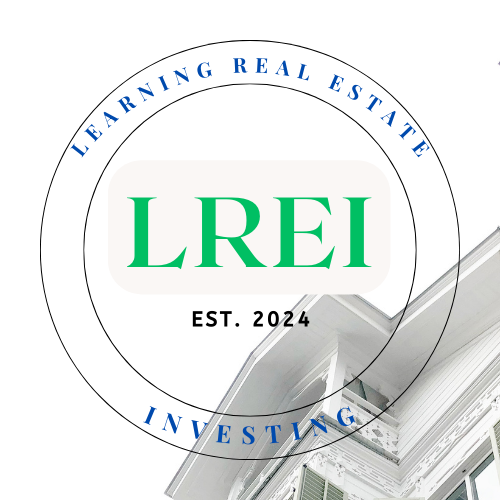Building a portfolio of rental properties is one of the best ways to create passive income, long-term wealth, and financial freedom. But how do you actually get started—and scale up?
In this article, I’ll share my personal journey from owning zero properties to a portfolio of 15 rental units—and the exact strategies I used.
You’ll learn:
✅ How I bought my first rental property with little money
✅ The biggest mistakes I made (and how to avoid them)
✅ How I scaled from 1 to 15 doors in 5 years
✅ The financing strategies that worked best
✅ How I manage properties efficiently (without burnout)
Whether you’re a complete beginner or already own a few rentals, this guide will help you grow your portfolio the smart way.
1. Why I Started Investing in Rental Properties
Before real estate, I was like most people:
- Working a 9-to-5 job, trading time for money
- Watching inflation eat away at my savings
- Feeling stuck in the “rat race”
Then, I discovered real estate investing—specifically, rental properties. Here’s why I chose this path:
✔ Passive Income – Rent checks coming in every month
✔ Appreciation – Properties increase in value over time
✔ Tax Benefits – Deductions for depreciation, repairs, and more
✔ Leverage – Using bank loans to grow wealth faster
I decided to take action—but I started small.
2. My First Rental Property (How I Bought It with Less Than $10K)
Step 1: Educated Myself
I spent 3 months learning before buying anything:
- Read books (Rich Dad Poor Dad, The Book on Rental Property Investing)
- Listened to podcasts (BiggerPockets, Real Estate Rookie)
- Joined local real estate meetups
Step 2: Found a Great Deal
I looked for:
- Cash-flowing properties (rent > mortgage + expenses)
- Affordable markets (avoided expensive cities)
- Motivated sellers (FSBO, probate, off-market deals)
Step 3: Used Creative Financing
I didn’t have much cash, so I used:
- FHA Loan (3.5% down) – Bought a duplex, lived in one side, rented the other
- House Hacking – Tenant’s rent covered 80% of my mortgage
Result: My first property only cost me $8,000 out of pocket—and started generating income immediately.
3. My Biggest Mistakes (And How to Avoid Them)
Mistake #1: Underestimating Expenses
- First Year Reality: A $5,000 roof repair wiped out my profits
- Fix: Now I budget 10-15% for repairs & vacancies
Mistake #2: Bad Tenant Screening
- Early Disaster: A tenant stopped paying and trashed the place
- Fix: Now I use strict screening (credit check, income verification, references)
Mistake #3: Overpaying for Properties
- First Overpayment: Bought a “cute” house that never cash-flowed
- Fix: Now I run the numbers on every deal (1% Rule, 50% Rule)
4. How I Scaled from 1 to 15 Units in 5 Years
Strategy #1: The BRRRR Method (Buy, Rehab, Rent, Refinance, Repeat)
- Buy a distressed property below market value
- Rehab it (cosmetic fixes, not major renovations)
- Rent it out for cash flow
- Refinance to pull out my initial investment
- Repeat with the recycled capital
Example:
- Bought a **80,000house∗∗,put20K into repairs
- Rented for $1,200/month
- Refinanced at **110,000∗∗,gotmy20K back
- Used that $20K to buy the next property
Strategy #2: Partnering with Private Investors
- I found private lenders (friends, family, local investors)
- They provided cash for down payments, I handled the deals
- Split profits 50/50
Strategy #3: Buying Small Multi-Family Properties
- Focused on duplexes, triplexes, and quads
- More units = higher cash flow per property
- Easier to finance with residential loans
5. My Financing Playbook (How I Funded Deals Without Going Broke)
| Method | How It Worked for Me |
|---|---|
| FHA Loans | Started with 3.5% down (house hacking) |
| Conventional Loans | Used after building equity |
| Cash-Out Refinance | Pulled equity to buy more properties |
| Private Money | Partnered with investors for quick deals |
| Seller Financing | Bought one property with $0 down |
6. How I Manage 15 Rentals Without Burning Out
System #1: Automate Rent Collection
- Use online payments (Zillow, Apartments.com)
- No more chasing checks
System #2: Hire a Property Manager
- After 10 doors, I hired a manager (worth every penny!)
- They handle maintenance, tenant issues, and rent collection
System #3: Batch Tasks
- Maintenance: Schedule all repairs in one day
- Leasing: Show multiple units at once
7. My Portfolio Today (By the Numbers)
- 15 Doors (mix of single-family & small multi-family)
- $12,500/month gross rental income
- $4,200/month net cash flow after expenses
- **1.8M∗∗portfoliovalue(upfrom0 in 5 years)
8. Key Lessons Learned (Advice for New Investors)
🔹 Start small (house hack if possible)
🔹 Focus on cash flow, not just appreciation
🔹 Screen tenants like your life depends on it
🔹 Reinvest profits to grow faster
🔹 Get help before you’re overwhelmed
Final Thoughts: You Can Do This Too!
I started with no experience, no money, and no connections—just a willingness to learn and take action.
If I could build a rental portfolio from scratch, so can you.
What’s your next step?
✅ Find your first deal?
✅ Analyze a property’s numbers?
✅ Talk to a lender?
Let me know how I can help—and happy investing! 🚀



Leave a Reply